January
East Falls Past – Trees
The Fallser, January 2014, by Wendy Moody
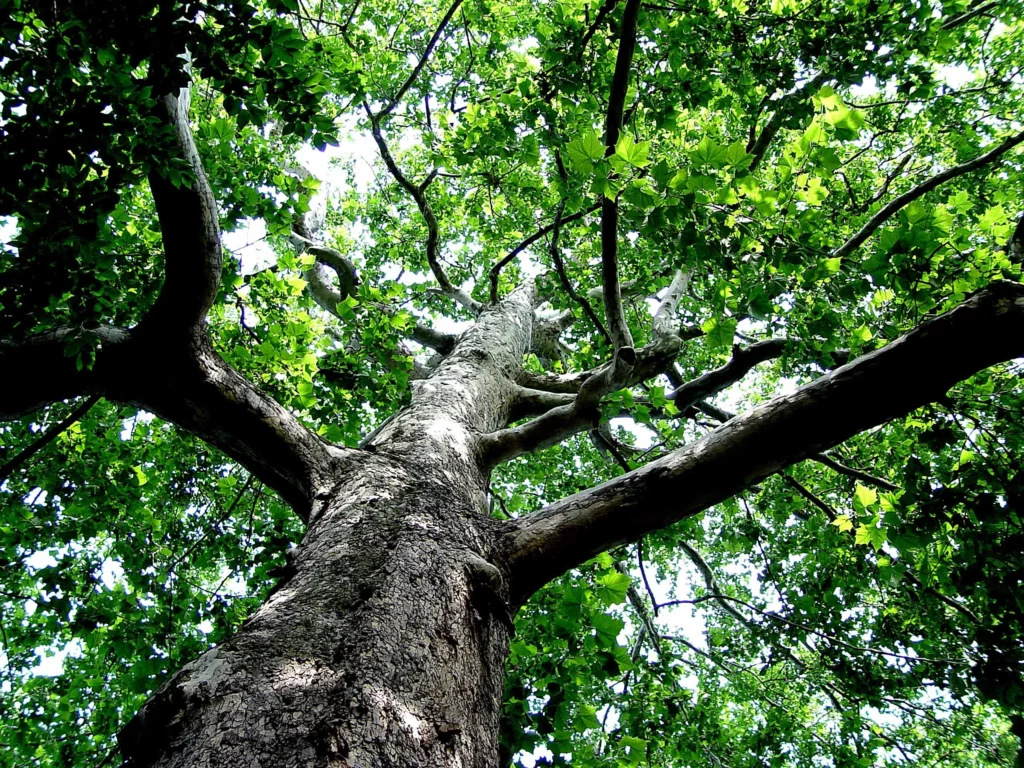
This month, instead of focusing on the history of people in East Falls, our subject is the history of local trees. In 1936, Alexander Chadwick wrote an article in the Suburban Press about nature in East Falls – especially the trees of botanical interest.
Let’s picture our neighborhood back then, as we listen to Mr. Chadwick describe it:
“At the time, 1936, Mifflin School was being erected and, whenever possible, the workmen were careful not to injure the trees that skirted the property.
Years before, this area was a beautiful woodland, extending from the Reading Railroad towards Wissahickon Avenue. Young people of the Falls had delightful times tramping through these woods. Shrubbery and wild flowers were found in profusion. Rabbits and squirrels were plentiful and birds made the woods ring with their song.
In the autumn we spent many a day chestnutting in the woods along Midvale Avenue. However, the chestnut tree blight, beginning around 1900 destroyed this fine species of wood, and the development of Queen Lane Manor made it necessary to remove most of the other varieties of timber.
The beautiful estates along School House Lane were places of study for botanists. True lovers can still find many interesting specimen trees along this thoroughfare.
The maple-lined road leading into Alden Park, once the home of Frederic Strawbridge, was one of the most striking to be seen.
At the original “Carlton” estate, there once stood a dogwood. It was located between the Queen Lane reservoir and Midvale Avenue, near Fox Street. The great plant was a notable one of its kind, measuring 5’ in circumference and 20’ high. Close by were two sassafras trees, each 2’ in diameter and 40’ high.
Outstanding examples of white pines, which are in many respects our most impressive trees, could also be seen at “Carlton” and at most School House Lane estates, from the Homewood School at Wissahickon to Ravenhill Academy.
John Wagner (near Timber Lane) boasted of a tulip poplar that was 5’ across and 60’ high.
On the Moses Brown estate (near Netherfield) stood a magnificent specimen of the Japanese shinko tree, (almost 10’ in circumference and reaching 80’ into the heavens!), a rare Japanese cedar and an even rarer “varnish” tree.
John Tucker’s “plantation” on Wissahickon Avenue extending from McKean’s Hill south to the Reading Railroad at Port Richmond, became Old Oaks Cemetery, and then much of the site of the Atwater Kent Radio plant. On this tract were three of the largest oak trees we have ever seen and several large chestnuts from which we picked many a cap-full of meaty nuts.
Cedars of Lebanon, which are considered to be the oldest of living things, were to be found in north Laurel Hill Cemetery (strangely enough in the City of the Dead).”
Please let this columnist know if you still see any of these trees!
February
Judge Michael Arnold
The Fallser, February 2014, by Wendy Moody
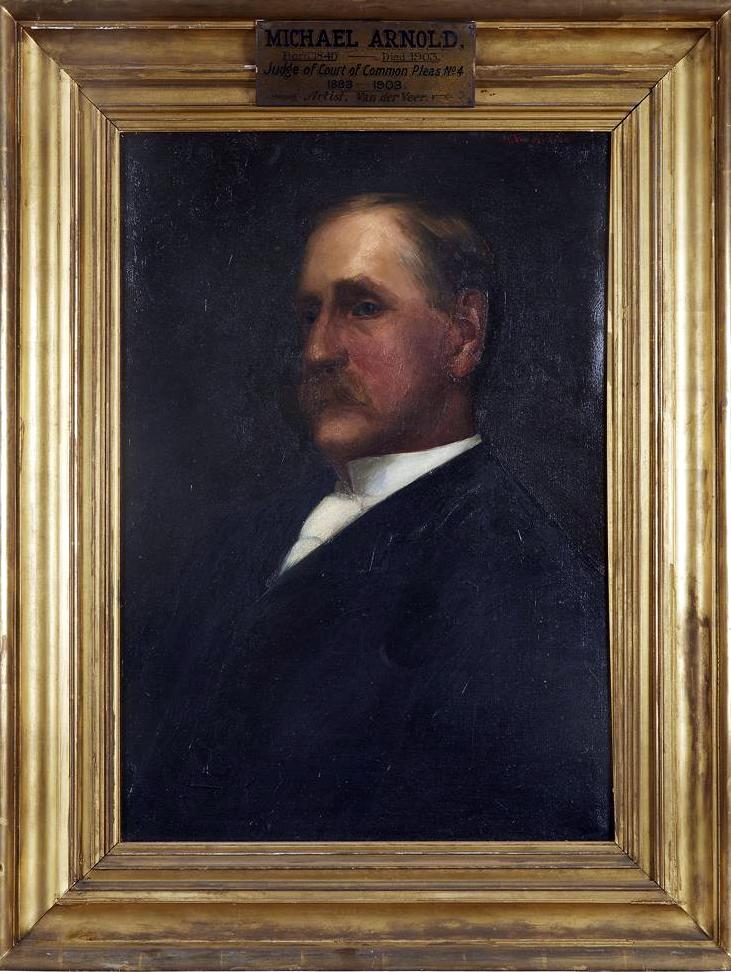
Judge Michael Arnold (1840 – 1903) was the first person from East Falls to serve on the bench of the Common Please Courts of Philadelphia.
Back in 1884, Judge Arnold, whose father owned the Falls Hotel, shared his recollections of East Falls in a Philadelphia Star article. How lucky we are to have this very early narrative description of East Falls:
“My residence in the Falls commenced in 1853, when I was 13. The houses were built of stone, wood, or brick, roughcast. I think the first pressed brick home was occupied by Louis Naher, on Ridge Road above the lane leading to the Reading Railroad bridge.
Spencer Street – now Calumet – and all the streets on the hill near the Norristown Railroad were not yet laid out. James Street – now Stanton – was built up slowly. Ridge road was a turnpike.
There were no street railways, brick pavements or boardwalks – consequently muddy walking was quite frequent.
People traveled to the city by stage, and in the summer by steamboats on the Schuylkill – even the daily papers were brought out by steamer. The daily mail was about a dozen letters.
Shaw’s Mill, consisting of one old square building on Scott’s Lane, stood where Dobson’s Mills later were.
Fire companies came out from the city. Water was pumped into the engines as there were no fire plugs and, in a short time, the pumps got choked with gravel.
Nugent’s Mill was an old mill and dye house on the Ridge road near the entrance to the public school house.
The part of Laurel Hill above Clearfield Street was called Kelly’s Hill. There was a tavern on it, which was a great resort on the Fourth of July.
The Baptist Church (on Indian Queen) had been built and so had several small houses between it and Ridge road. There were no houses above the church. All that land was wild growth – blackberry bushes and chestnut trees. I have been told that rabbits and woodcock ventured there.
The old school house (Old Academy) was used for school on weekdays and church on Sundays. It was dedicated in 1816, on trust as a church and school for all denominations. Public exhibitions and concerts were given there. Among those who dedicated it were William Smith, Provost of Penn, Godfrey Shronk, and Charles Hagner, historian.
Samuel Garrett lived further up in the woods (Vaux and Ainslie). The country around him was wild indeed. It was said that his house was once occupied by Count Von Donop, one of the commanders of the Hessian contingent to the British Army during their occupancy of Philadelphia prior to the Battle of Germantown.
Garrett’s land had been in his family since before the time of Penn, making it the oldest house in Falls. It is said that some of his ancestors were murdered there by robbers.”
East Falls Past – Teresa Altomare Corcoran
The Fallser, March 2014, by Wendy Moody
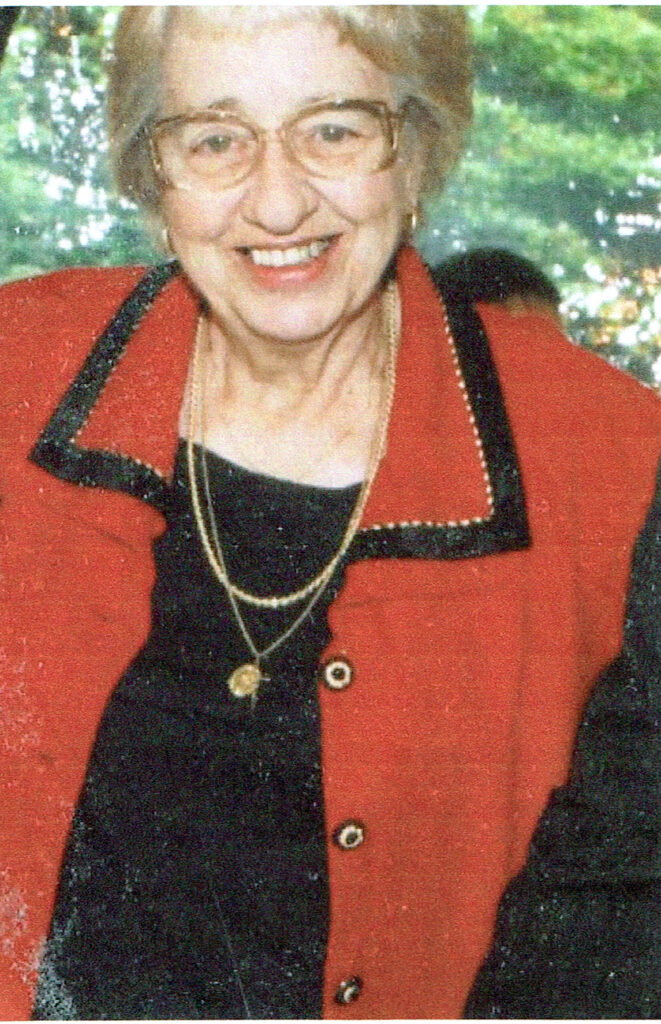
In 2009, Louise McShane interviewed her mother, Theresa (Altomare) Corcoran, who was born and raised in East Falls. Some interesting highlights:
Theresa, where were you born?
I was born in 1923 on the 3600 block of Stanton Street, in one of the 13 houses that was demolished for the school construction. I went to school at St. Bridget’s, got married there, and my eight children were schooled there. Some people laugh when I tell them that my children attended class in the same space where I was born by a midwife.
When did your family come here?
My father came to East Falls in 1912 from Italy. Later he returned there so that he could bring my mother and brothers to Stanton Street to live.
Tell me about the immigrants on Stanton and Calumet Streets.
It didn’t seem the Irish and Italians got along too well. I remember them quarreling. I witnessed a man shot to death where the old church was on Stanton Street.
The Irish lived closer to the river, and the Italians lived up from them. The Italians made their own community and spoke Italian.
Do you remember the Kellys?
John B. Kelly had influence at city hall and helped reduce taxes for some of the poorer people in East Falls. My Dad and I went to Mr. Kelly’s house and he helped a great deal with our taxes for the Stanton Street house purchase.
I remember playing with the Kelly girls. Grace was six years younger than me.
How did Prohibition affect the way people lived?
Our house was directly across from one where they used to do bootlegging. There was a hollowed tree in front with a huge hole in the bark. They used to make whiskey and hide it there when the police came. Unfortunately, the bootleggers bought a parrot who observed, and repeated, everything illegal that was going on.
One day the parrot heard Louie the bootlegger’s wife say “Louie, the cops are coming, hide the liquor in the tree!” When the police arrived they asked Louie if he had moonshine, and he said “No.” All of a sudden the parrot repeated “Louie, the cops are coming, hide the liquor in the tree!”
What was it like during The Depression?
Our family didn’t feel The Depression too much because my father had a good job. But he lost his money at the bank at Ridge and Midvale. I remember him going there for his money, but the doors shut. That was a bad memory.
People had to find a way to live. We, and other Italians, planted vegetable gardens in what is now called The New Homes on upper Cresson.
Many of my friends’ parents were unemployed and went to the bread line on Ridge across from the bathing house. I went with them to get them extra bread.
Why do you think living here was special?
I think The Falls is one huge family. The neighbors help if you need them. It’s a beautiful neighborhood. I’ve met many good people, especially the parishioners at Saint Bridget’s.
East Falls Past- William Grattan Tyrone Power
The Fallser, April 2014, by Wendy Moody
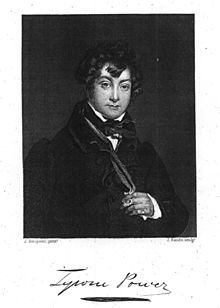
The Schronk family is one of the oldest in East Falls. Godfrey Schronk had a fishing business near Falls Bridge in the 1700’s, allegedly catching thousands of catfish in his net every day. His son, Robert Roberts Schronk, was a reporter during the 1800’s and a source of information for A. J. Chadwick’s papers in the 1930’s.
Ellen Sheehan was lucky to interview Shirley Warrington Shronk, who grew up in East Falls and married John Shronk. Such poignant memories!
Where were you born?
In the front bedroom of 3530 Sunnyside Avenue, in 1926. It was a Monday, wash day. My bed was the wash basket. My grandfather lived at 3584 Indian Queen Lane, so we were long-time residents.
What was Falls like then?
I called it “United Nations.” Within five houses were the Mulligans (Irish), Whitakers (English), Stephensons (Scottish), Verdones (Italian), and my American-born parents. Everyone got along. The Italian woman down the street taught me to embroider.
Where did you go to school?
Through 2nd grade, I went to the old stone Forest School, then from 3rd to 5th to Breck School, with the big trees in the play yard. Forest had no water– the bathroom was at Breck.
When Mifflin opened in 1937, we walked from Breck to the lovely new school. I remember the contest to select school colors. We finally settled on gray and maroon. When I brought lunch to school, it would be a mustard, pickle, or butter sandwich.
What did you do when you were sick?
You didn’t see a doctor. We didn’t have antibiotics. The remedy for an ear infection was cigar smoke blown in your ear!
What did you do for fun?
We sledded down “The Nuts” (the big hill near the library) and from our house. The 3500 block of Sunnyside was cobblestones. There were few cars, so we’d start up at Conrad and come right down. If lucky, you would turn the corner at Cresson and wind up on the railroad curb.
My father made us ice skates out of roller skates. He took the wheels off and added runners from an old sled for blades.
I loved watching boys play marbles in the back alley and play half ball. They cut a 3” ball in half after it split – you didn’t cut a good ball! In summer we played “Red Rover” and “Kick the Can.” Anyone could join in.
Anything to add?
I collect kitchen antiques because they bring back memories. The man who sold snow cones around the neighborhood scraped from the large block of ice in the wagon and flavored it from bottles of syrup. There was an ice crème wagon. The ice man came down the cobblestone streets with a horse and wagon. A man came with a monkey on a leash and an organ grinder. Another man sharpened knives. It was a different life. We all got along so well together. It was a joy.
East Falls Past – Shronk Family
The Fallser, May 2014, by Wendy Moody
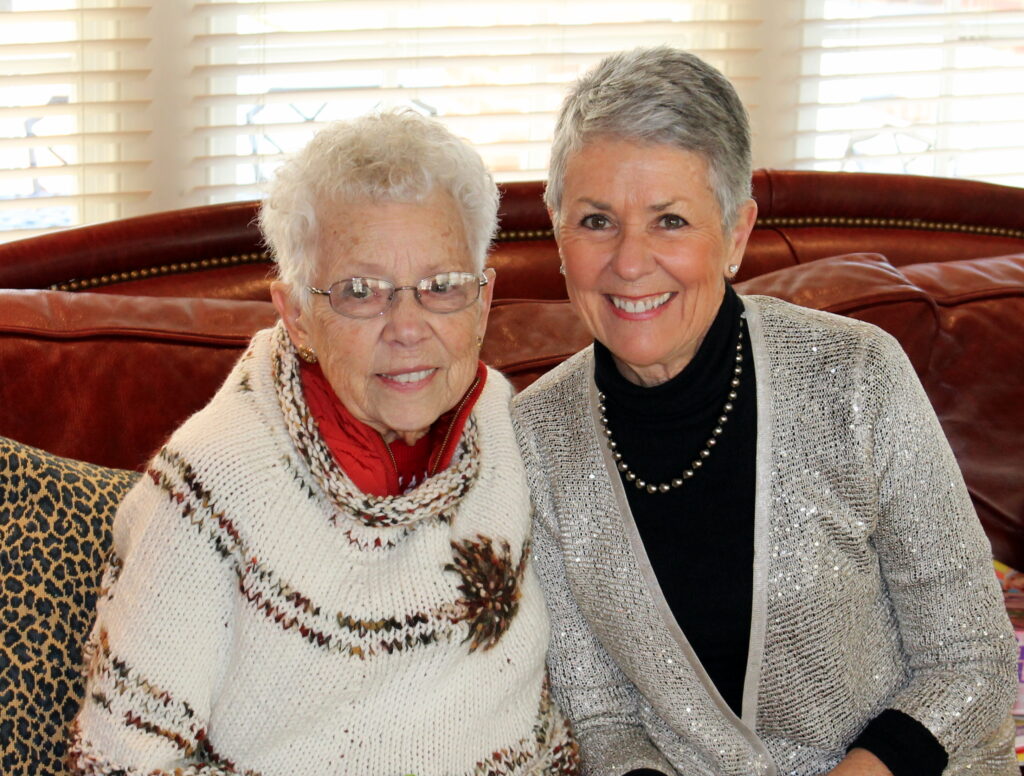
The Schronk family is one of the oldest in East Falls. Godfrey Schronk had a fishing business near Falls Bridge in the 1700’s, allegedly catching thousands of catfish in his net every day. His son, Robert Roberts Schronk, was a reporter during the 1800’s and a source of information for A. J. Chadwick’s papers in the 1930’s.
Ellen Sheehan was lucky to interview Shirley Warrington Shronk, who grew up in East Falls and married John Shronk. Such poignant memories!
Where were you born?
In the front bedroom of 3530 Sunnyside Avenue, in 1926. It was a Monday, wash day. My bed was the wash basket. My grandfather lived at 3584 Indian Queen Lane, so we were long-time residents.
What was Falls like then?
I called it “United Nations.” Within five houses were the Mulligans (Irish), Whitakers (English), Stephensons (Scottish), Verdones (Italian), and my American-born parents. Everyone got along. The Italian woman down the street taught me to embroider.
Where did you go to school?
Through 2nd grade, I went to the old stone Forest School, then from 3rd to 5th to Breck School, with the big trees in the play yard. Forest had no water– the bathroom was at Breck.
When Mifflin opened in 1937, we walked from Breck to the lovely new school. I remember the contest to select school colors. We finally settled on gray and maroon. When I brought lunch to school, it would be a mustard, pickle, or butter sandwich.
What did you do when you were sick?
You didn’t see a doctor. We didn’t have antibiotics. The remedy for an ear infection was cigar smoke blown in your ear!
What did you do for fun?
We sledded down “The Nuts” (the big hill near the library) and from our house. The 3500 block of Sunnyside was cobblestones. There were few cars, so we’d start up at Conrad and come right down. If lucky, you would turn the corner at Cresson and wind up on the railroad curb.
My father made us ice skates out of roller skates. He took the wheels off and added runners from an old sled for blades.
I loved watching boys play marbles in the back alley and play half ball. They cut a 3” ball in half after it split – you didn’t cut a good ball! In summer we played “Red Rover” and “Kick the Can.” Anyone could join in.
Anything to add?
I collect kitchen antiques because they bring back memories. The man who sold snow cones around the neighborhood scraped from the large block of ice in the wagon and flavored it from bottles of syrup. There was an ice crème wagon. The ice man came down the cobblestone streets with a horse and wagon. A man came with a monkey on a leash and an organ grinder. Another man sharpened knives. It was a different life. We all got along so well together. It was a joy.
East Falls Past – July 4th
The Fallser, July 2014, by Wendy Moody
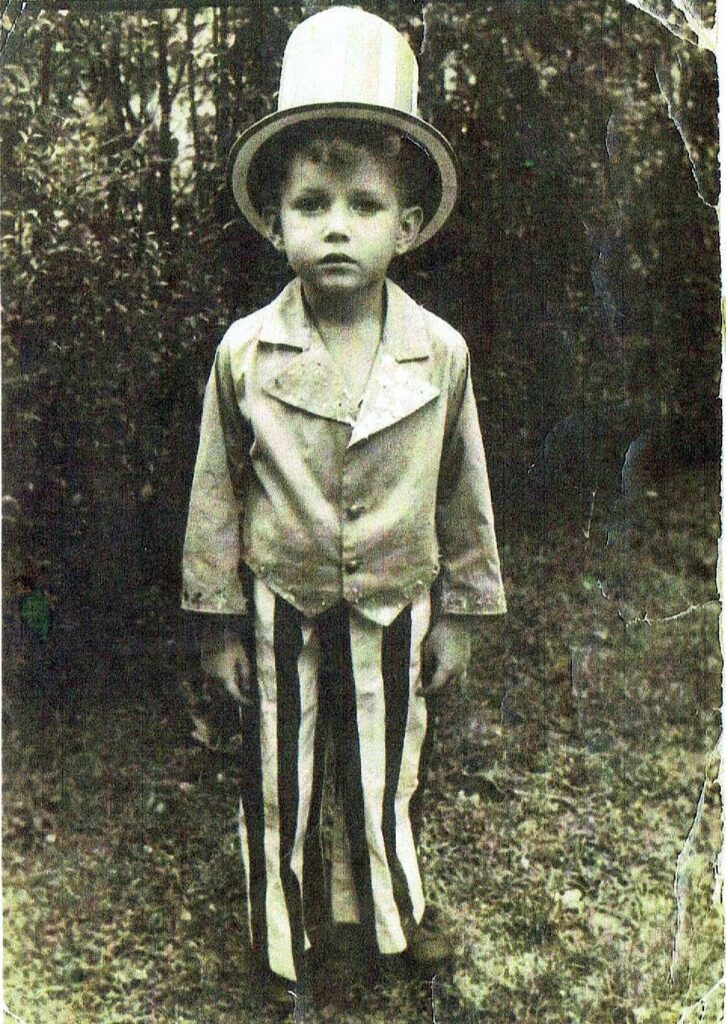
Over the years, Fallsers have shared how they celebrated July 4 as kids, mostly recalling r church picnics. These colorful recollections are a special part of the EFHS oral history archive:
Harry Prime (interviewed in 2011):
4th of July was the best. About five churches prepped for it. Everybody became a bugler, even I did. Every few blocks the director would tell us to play “My old man’s a good old man, boom-ba-boom!” It was all fingering and valves. Women paraded with baby carriages decorated in bunting down streets lined with people. “Here come the Methodists!” “Here come the Baptists!” You’d catch them all. Whatever you wanted to be, you could be converted that day.
At night we’d have fireworks. We’d sit on pillows– like a loaf of Bond bread – on the Belgium blocks on Bowman Street and look at Woodside Park right over the river, waiting for the 9:00 fireworks. “Oh! There’s the first one!” This thing would go up and, boom, it would explode!
Mae Mohr (1983):
First everyone met for a service at McDevitt playground – it was just a plain hill then – and then each church went to their own picnic ground. The Presbyterian picnic was held on parkland behind their old church on East River Drive, near Wissahickon. They put swings from one tree to the other.
Mary Cashman: (2013):
Oh my goodness, the Fourth of July! St. Bridget’s had wonderful picnics with all the parishoners in McMichael Park. Soda, games – everything for kids.
Daniel Furman (2011):
The Presbyterian parade started on Frederick Street, went down Indian Queen Lane, Ridge, and East River Drive back to the church. Starting at age 5, I dressed as Uncle Sam and led the parade. I looked like a flag, wearing red and white striped trousers, a blue jacket with stars on the lapels, and a big Lincoln hat.
Edith Gotwols (2009):
The Presbyterians picnicked on the river – ground beef sandwiches and lemonade!
Jack McNicholas (2011):
St. Bridget’s parade went to McMichael Park. You had to get a ticket for a hotdog and a soda around March or you wouldn’t get one…there were so many kids! We marched up Midvale, over Conrad, and switched from Sunnyside to Bowman because it was wider.
The Methodists had a drum and bugle corps that played every year, even when there were only three or four of them left. Falls Presbyterian would picnic at Penn Charter. The Lutherans had their picnic on their own grounds on Midvale and Conrad.
Catherine McBeth (2013):
St. Bridget’s had the Fourth of July picnic at the big beautiful mansion at the Dobson estate.
East Falls Past – Woodside Park
The Fallser, August 2014, by Wendy Moody
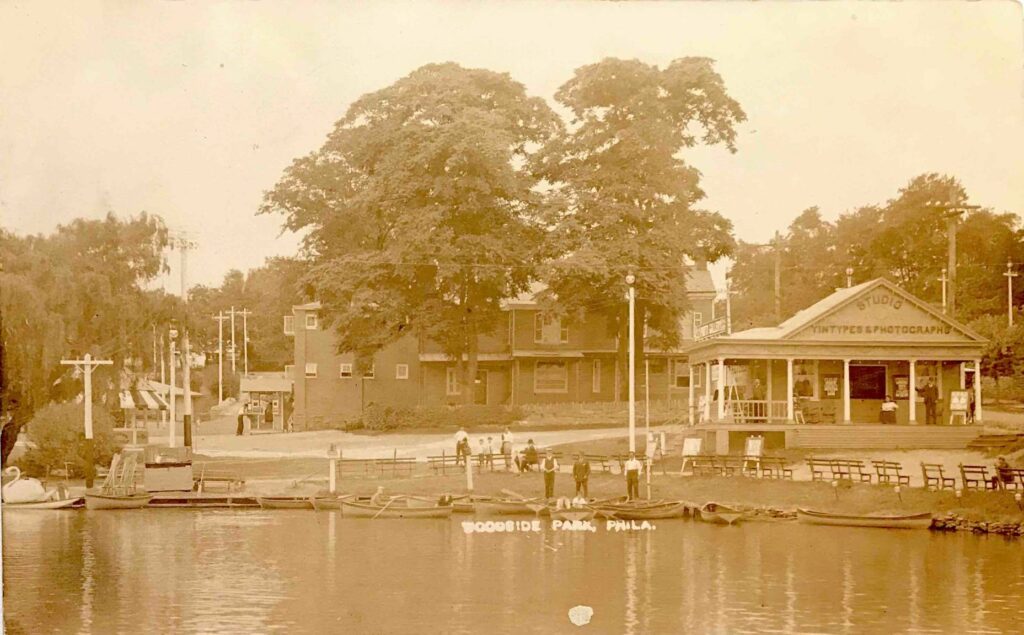
Fallsers loved Woodside Park, a Coney Island-like amusement park in West Fairmount Park built by the Fairmount Park Transportation Company in 1897. Like Chestnut Hill and Willow Grove Parks, Woodside was built along a trolley route. 10 miles of trolley tracks surrounded it.
Woodside Park closed in 1955, but memories are still fresh and evocative …especially the route there…
Shirley Shronk:
I loved riding there on the open trolley through the woods when I had carfare. If not, we’d walk across the Falls Bridge, follow the tracks, cut through the bridge under the railroad to the woods, then on to the park. Safety in numbers… Loved their fireworks!!!!
Joe Petrone:
On the last day of school at St. Bridget’s, the nuns handed you a strip of tickets for Woodside. We’d march down Stanton, across the bridge, through the tunnel to “Chamounix,” up the hill with a reservoir, along the path of the old park trolley, and through the tunnels to Woodside.
Oh what a wonderful place! You could drive yourself in a motorboat on the giant lake. You exited one of the funhouses by rolling down a giant carpet!
In the shooting gallery you learned to shoot your first 22 rifle.
Did you know the carousel is now in the Please Touch Museum?
June Drumheller Miller:
On Friday nights we sat on McKinstry’s front steps (on Conrad) to wait for the Woodside fireworks from 9:45 – 10 pm. McKinstry’s had six white stone steps – room enough for all the kids. As each firework burst open spectacularly in the summer sky, we shouted “Yaaay!”
Robert Connolly:
Lucky me! My dad managed the big merry-go-round for 30 years so I had run of the park – I never paid. The carousel had beautiful flashing colored lights and real merry-go-round music. Sometimes I loaded the brass ring grabber.
As you entered Woodside, you’d get orangeade at the fresh orange stand.
Three roller coasters! The giant Wild Cat was a mile high – or so it seemed. It climbed slowly up the wooden hill then raced down in 5 seconds! It ran crazy, throwing bodies all over – the best ride in the park, especially the front seat … Wowzzzzzzzz! The Tornado slammed you to the bottom with your body shaking – not for the light hearted. The Hummer was gentler.
The Fun House had air holes all over – large puffs of air shot out from the bottom and blow up the girl’s skirts… in front of everyone it happened!
Jack Steck, from WFIL Radio, emceed amateur and kiddie shows. Ballroom dancing was in a large, round building.
Breyer’s and others gave free tickets and sponsored special days – even Orangeman’s Day!
Good years! Three summers I worked guessing people’s weight at a stand with a giant weight machine and cheap prizes in case we were wrong…
I remember walking there through a “dirty, crummy stinking tunnel…”
September
East Falls Past – Falls Bridge
The Fallser, September 2014, by Wendy Moody
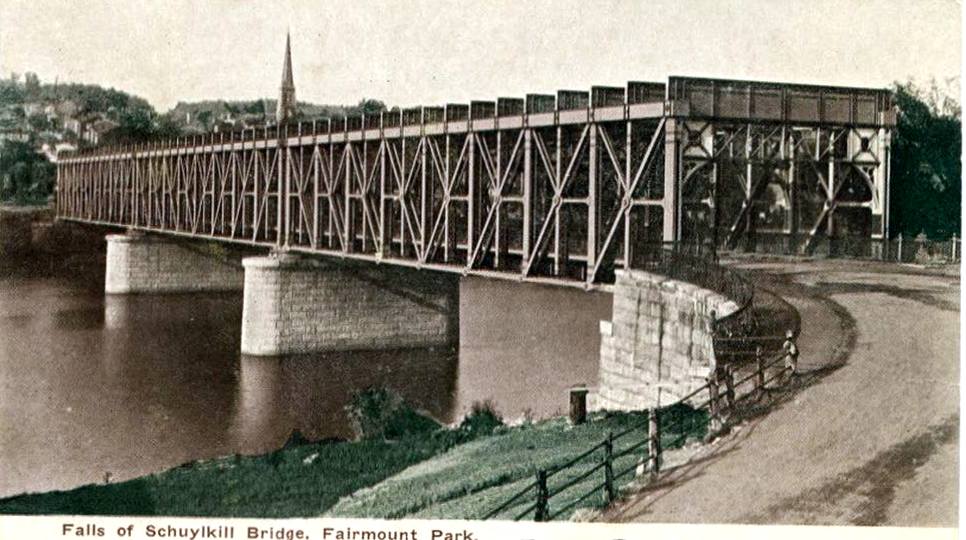
How many of you know the Falls Bridge was recently featured in Modern Steel Construction? Jim Talbot, a technical writer, contacted the East Falls Historical Society to research his article for this journal – the only magazine in the United States devoted exclusively to the design, fabrication, and construction of structural steel buildings and bridges.
With the Dance on the Falls Bridge this month, Talbot’s article provides technical insights and appreciation of just what you’re dancing upon…
“The Falls Bridge, completed in 1895, replaced several predecessors destroyed by overloading, floods and fire (flood waters lifted the earliest bridge off its piers and floated it down river in spectacular fashion). The community greatly celebrated the bridge opening in June 1895 because it provided a much needed link between the two sides of the river – many factories were located on the Schuylkill’s west side. The original flamboyant paint colors of red, buff and light blue made the bridge a striking sight.
Filbert Porter and Company built the Falls Bridge at a cost of $262,000, with James Windrim serving as director of public works and George Webster as chief engineer.
The bridge has a length of 566 feet, its longest span is 192 feet, and a deck 41 foot wide, with pedestrian walkways on both sides. The deck is a closed grating with a bituminous wearing surface; overhead clearance is 16.4 ft.
Two piers and abutments of stone masonry, built on solid bedrock, form the substructure. These supports were started nearly 10 years prior to the bridge’s completion.
The superstructure divides into three connected spans, each nearly 190 ft. in length. Each span is modified steel Petit through-truss having eight panels and riveted and pinned connections. The Pennsylvania Railroad pioneered the Petit truss design for bridges. Petit, a variation of the Pratt truss, characterized by diagonals that slope down toward the middle of the truss, adds half-length struts within a panel. In this case two struts connect a panel’s center diagonally to the upper chord and horizontally to one side.
Built-up lateral plate girders serve as the floor breams that support the deck roadway (the bridge can hold 80 lbs. per square foot).
The original plan called for an upper deck to support a roadway and a two-way railroad track. The existing heavy upper bracing would have served as the floor beams for the upper deck. The need to acquire more land, displace existing structures, and fund work on the upper deck, would have exceeded the $300,000 appropriated by the city. It was never built.
The railing consists of stock iron 5/16 in by 1.5 in. The iron is wrought into a decorative curvilinear pattern that repeats twice across each panel, and the pattern has a centered medallion with curved scrolls reaching upward on each side. Two vertical vine-like structures on each end complete a repeated pattern.” (From Philadelphia Falls by Jim Talbot, Modern Steel Construction, March 2014).
Dance away…solid is less than the word for this bridge…
October
Ferry on the Schuylkill
The Fallser, October 2014, by Wendy Moody

‘Ferry me across the water,
Do, boatman, do.’
‘If you’ve a lenny in your lurse
I’ll ferry you.’
‘I have a lenny in my lurse,
And my eyes are blue;
So ferry me across the water,
Do, boatman, do.’
‘Stel into my ferry-boat,
Be they black or blue,
And for the lenny in your lurse
I’ll ferry you.’
Christina Georgina Rossetti
Was Rossetti thinking of East Falls? In 1911, Robert Roberts Shronk, chronicler of life in Falls, was asked about the old ferry (circa 1830) that operated near the Falls Tavern by Ridge Avenue and Ferry Road. The tavern and ferry were interconnected – the ferry being known as Watkin’s ferry and the tavern, operated by Mrs. Robert Watkins, Sr., known as the best place to enjoy catfish and waffles.
Robert Shronk remembered the frame ferry house at the foot of the roadway:
“Beside the ferry house was an immense tree, willow, I think, to which one end of the ferry rope was fastened. The other end – on the west side of the river – was fastened to a large iron ring which was placed on a rock above the river road near Simpson’s old barn. I remember this ferry was attended by George Glanding, whose family occupied the dwelling. His father, Archibald Glanding, and Peter Shronk, my grand uncle, previously had charge of the ferry.”
(Note: These old “rope ferries”were established at several points along the Schuylkill River. They were rigged with ropes running from shore to shore, by means of which the boats were drawn across. Navigators on the river frequently cut these ropes, thus delaying ferriage. In 1766 the Assembly passed an act imposing a fine of ten pounds for such an offense; but it also enacted that under the same penalty the ferrymen must sink the ropes when they were not in use).
On the west side of the river the ferry road led up the hill behind Simpson’s barn, crossed the railroad after the latter had been built in 1840, and ran along the base of what is now Chamounix Hill and out toward the “Five Points,” coming up on the top of the opposite embankment at the turn of the Falls Road.
Robert Shronk reminisced: “When I was a boy, the old ferry scow which my uncle Godfrey Shronk 2nd used in ferrying goods to and from Simpson’s Mills, was moored at the shore of my father’s property (a “Shad and Herring Fishery”). In the summertime several of us boys would unfasten the scow, pole it up the river to the Wissahickon, then throw off our clothes and let the scow drift down with the current to its mooring place while we would swim. Many a time that old scow carried a good load of fine apples which we borrowed from Jesse Evans’s orchard.” (Chronicle, April 1911)
November
James Buchanan’s Laurel Hill Connection
The Fallser, November 2014, by Wendy Moody
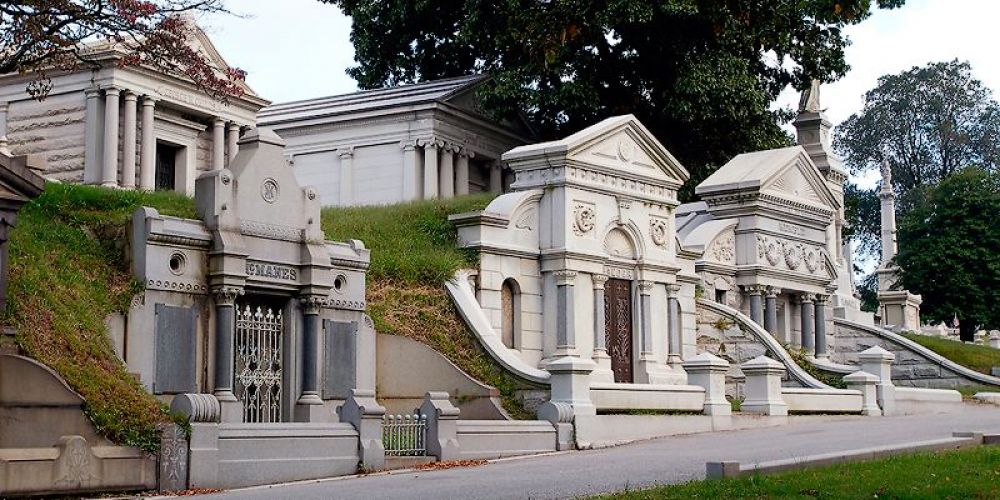
What possible connection could our 15th president, James Buchanan, have with East Falls?
As it turns out, Buchanan’s financee was buried at Laurel Hill cemetery. The tragedy of her dying before they were married, some say, was the reason he remained our only bachelor president.
Here is how a 1929 Suburban Press article recounted what had happened back in 1819:
“The story of Buchanan and his early love is very touching and presents the character of a man who was ridiculed on account of his bachelorhood. In the campaign for his election this fact was used against him.
At age 24, Buchanan was a rising attorney in Lancaster, Pa. and was engaged to an esteemed young lady there – Ann Caroline Coleman, whose family owned the finest coal mines in the state, known then as the Buck Mountains.
The year was 1819. Buchanan had made arrangements with Miss Coleman to attend a dance but, unfortunately, his professional friends requested that he transact some legal business the same evening. In a quandary, he finally decided he would escort Miss Coleman but when she learned of his business engagement, she refused to let pleasure interfere with business and decided to stay home.
On the evening of the appointment, Buchanan waited until 9 pm in the office for his friends but they did not appear. Finally the office janitor asked Buchanan if he had received his colleagues’ letter on the desk which said the meeting had been called off. He hadn’t. Annoyed, and too late to call on Miss Coleman, Buchanan decided to stroll past the dance hall to see how the affair was progressing.
As he entered he spoke to some lady acquaintances. He remained just a few minutes before going home but it is supposed that this was long enough for someone who saw him enter with the ladies to carry word to Miss Coleman that he had escorted another woman to the dance.
When she failed to appear for breakfast the next morning, a servant found her “cold in death with an empty laudanum bottle beside her.” It is supposed she became disconsolate and ended her life.
The Coleman family turned their grief and guilt on Buchanan and forbade him to attend the funeral. Ann’s body was brought to Laurel Hill – her grave is marked by a monument surmounted by the figure of a young girl leaning on a pedestal.
For many years, Buchanan visited her grave. The incident so severely shook him, he vowed never to marry another. He became our only bachelor president (and the only president from Pennsylvania).
Note: Other accounts of this story claim that friends of Miss Coleman told her Buchanan was only interested in her money (though he was worth over $250,000 before age 30 – a sizeable fortune then) and that he was seeing another woman. Distraught, she sent him a letter breaking the engagement and died a few days later.
December
Joe Petrone Interview Highlights
The Fallser, December 2014, by Wendy Moody
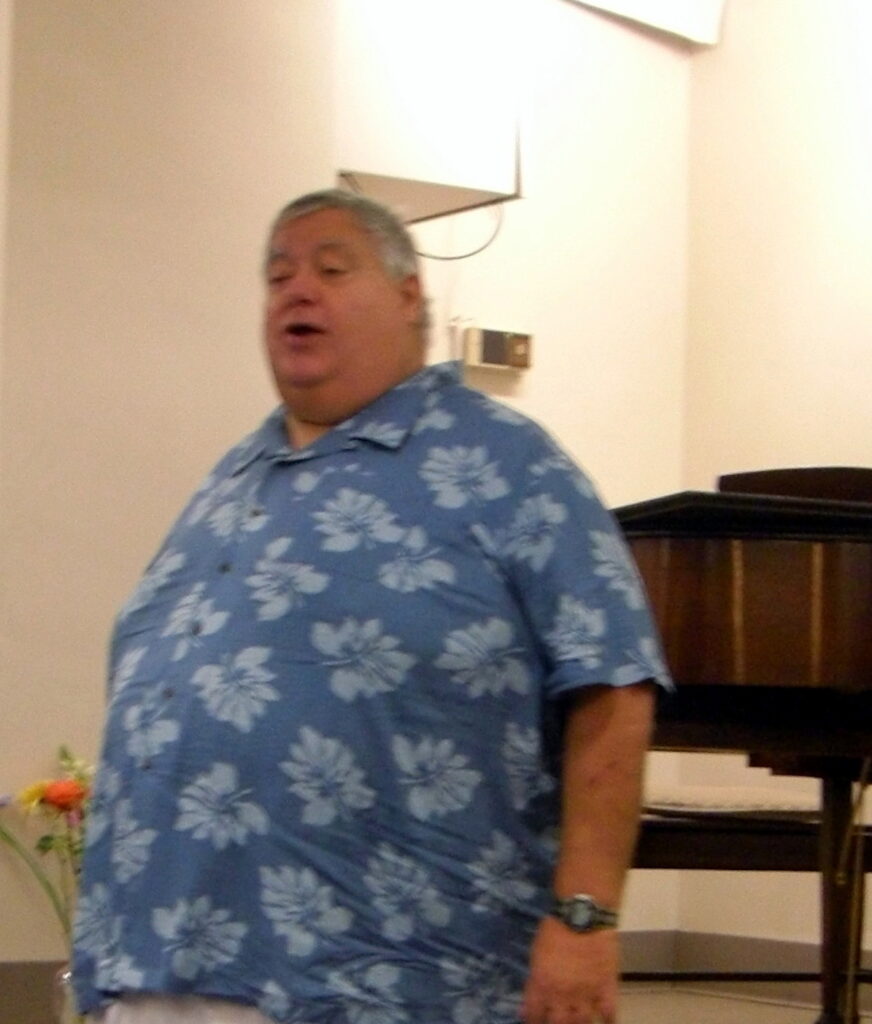
The EFHS wants to warmly thank Julie Camburn for providing us a venue for sharing our neighborhood’s unique history for the past 20 years.
Joe Petrone, a realtor, raconteur, and second generation Fallser, shared some of his lively memories with us:
Where you were born?
In Doctor’s Hospital, Philadelphia, on October 6, 1943. The bill was $32.
Any special memories of St. Bridget Church?
I was in altar boy school and then found out that altar boys had to wake up at 4 in the morning. I said “Uh, uh, not for me.” So I flunked out of altar boy school. I was the first one in history to drop out. To this day, I can still say the Latin.
Did you have an afterschool job in East Falls?
My father owned a poolroom and every day I would shine the balls, polish tables, clean floors, and carry fuel oil from the gas station to the kerosene heater. I got five bucks every two weeks.
It was a social gathering place. All the young men came, it was strictly men. Women would phone to find their husbands. I guess you could call it a seedy place – it was. There were card games in the back and numbers being taken. If a guy didn’t like what was happening, he’d throw the cards in the air – when I cleaned, there might be five decks of cards lying on the floor. I was the only kid in grade school that had 150 decks of blue ribbon cards.
Did you know the Kellys?
Oh yeah. My dad was very friendly with John B. Kelly. Mr. Kelly gave me a little golden oar from the Henley Regatta from his son. I kept it in my cigar box with my marbles.
He was a nice man, strong looking. Dad would do the painting and papering up at his house. He’d go through the front door with his paint bucket and walk up the steps, spilling paints all over the floor with Mrs. Kelly running behind “You’re spilling paints on my steps!
Any impressions of Grace?
Ah! I was in love with her. Around 1952, Mrs. Kelly was involved with the hospital and they had a Rose Carnival. I was nine. My job was to ride through East Falls in the back of a Buick convertible with Grace Kelly and sell chances to the Carnival. The loudspeaker would be blaring and the people selling chances would walk along the car.
I would sit there and just gawk at her. I was in love with her. She was very pretty. One day at the Carnival somebody brought a gold compact over to a Germantown lady and me and said “Oh Grace gave you this to sell.” It had her name engraved on it. It was hers! It was five bucks but that was a million dollars in those days. I wanted that so bad, so bad. I didn’t get it. But she was a beauty…



